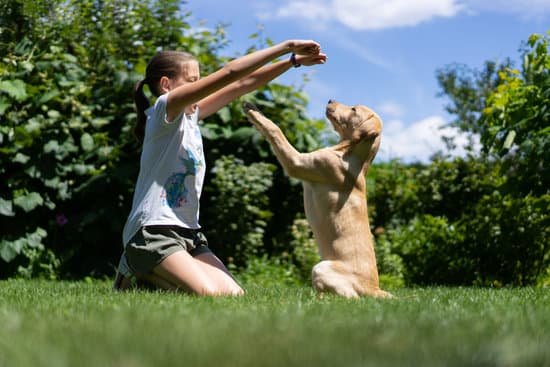Dog Board and Train programs are becoming increasingly popular among dog owners who want to ensure their furry friends receive professional training and behavior modification. This article will delve into the concept of Dog Board and Train, exploring its benefits, how it works, and what dog owners can expect from such programs.
Dog Board and Train involves sending your dog to a specialized facility where they will receive intensive training and behavioral modification from professional trainers. During their stay, dogs will be taught various commands, socialization skills, and behavioral cues in a controlled environment away from home.
These programs offer a range of benefits for both dogs and their owners, including accelerated learning, behavior modification, personalized attention from professional trainers, and the convenience of having your dog trained while you are away or unable to dedicate time to training them yourself. Let’s explore the details of Dog Board and Train programs and how they can benefit your furry friend.
Benefits of Dog Board and Train Programs
Dog board and train programs offer numerous benefits for both dogs and their owners. One of the main advantages of these programs is the opportunity for intensive training in a controlled environment. This means your dog will receive consistent training from professional trainers while being immersed in a structured learning environment.
Another benefit of dog board and train programs is the convenience it offers to busy dog owners. Instead of trying to find time in your schedule for regular training sessions, you can simply drop off your dog at the facility and pick them up once they have completed the program. This makes it especially convenient for individuals with demanding work schedules or other commitments.
Furthermore, these programs often provide specialized training for specific behavioral issues such as aggression, anxiety, or excessive barking. It can be difficult to address these issues on your own, so having professional trainers assess and work with your dog can lead to more effective results.
| Advantages | Benefits |
|---|---|
| Intensive Training | Consistent professional training in a structured environment. |
| Convenience | Great option for busy dog owners. |
| Specialized Training | Focused attention on specific behavioral issues. |
How Does Dog Board and Train Work?
Dog Board and Train programs are a popular choice for pet owners who want to ensure their dogs receive proper training and socialization in a controlled environment. These programs involve sending your dog to a professional trainer or facility for an extended period, typically ranging from a few weeks to a few months.
Initial Evaluation
Before starting the board and train program, your dog will undergo an initial evaluation with the trainer. This evaluation helps the trainer understand your dog’s behavior, temperament, and specific training needs. It also allows the trainer to assess if the board and train program is the right fit for your dog.
Customized Training Plan
Once your dog begins the board and train program, the trainer will create a customized training plan tailored to your dog’s specific needs. This plan may include basic obedience training, behavior modification, socialization with other dogs and people, and addressing any specific issues such as aggression or anxiety.
Daily Training Sessions
During their stay at the training facility, your dog will participate in daily training sessions with the professional trainer. These sessions are designed to help them learn new skills, reinforce positive behaviors, and address any behavior issues. The trainer will use positive reinforcement techniques to encourage good behavior and discourage unwanted behaviors.
The key to success for Dog Board and Train is consistency among humans involved in taking care of the pet after returning home from its time at these facilities. Consistency reinforces learning while changes of habits in humans confuse pets leading them displaying erratic behavior even after finishing these programs_SUCCESS_TEXT.
Choosing the Right Dog Board and Train Program for Your Dog
When it comes to choosing the right dog board and train program for your furry friend, it’s important to do your research and consider your dog’s specific needs. There are numerous programs available, each with their own unique approach and training methods. It’s crucial to find a program that aligns with your dog’s temperament, behavioral issues, and training goals.
One of the first things to consider when choosing a dog board and train program is the reputation and experience of the trainer or facility. Look for trainers who are certified and have a proven track record of successful outcomes. Reading reviews and asking for referrals from other pet owners can also provide valuable insight into the quality of a program.
Additionally, consider the training methods used in the program. Positive reinforcement techniques are widely recommended by experts as they foster a healthy relationship between the dog and trainer. Avoid programs that rely on punishment-based methods or use tools such as shock collars, as these can have negative long-term effects on your dog.
Another important factor to consider is the level of individual attention and customization offered in the program. Every dog is unique, so it’s crucial that the training plan is tailored to meet your dog’s specific needs and address any behavioral issues they may have. Look for programs that offer personalized attention from experienced trainers.
By carefully considering these factors, you can choose a dog board and train program that is best suited for your furry friend’s needs and set them up for success in their training journey.
What to Expect During Your Dog’s Board and Train Experience
When you enroll your dog in a board and train program, it’s important to know what to expect during their time away from home. This section will provide an overview of the typical experience for dogs in board and train programs, including the daily routine, training methods, and communication with the trainer.
Daily Routine
During their board and train experience, your dog will be immersed in a structured daily routine that includes training sessions, exercise, socialization, and rest. Trainers typically create a schedule that mirrors a regular day in a well-balanced dog’s life, which helps dogs adjust more easily to their new environment. From morning walks to meal times and play sessions, every aspect of your dog’s day is carefully planned to promote positive behaviors and habits.
Training Methods
Trainers use various positive reinforcement techniques to teach your dog obedience commands, leash manners, social skills, and more. These methods focus on building trust between the trainer and your dog while rewarding good behavior. During the board and train program, your dog will learn through repetition, consistency, and positive association with rewards such as treats or praise.
Communication With the Trainer
While your dog is away at a board and train program, open communication with the trainer is essential for updates on progress and any concerns you may have. Most trainers provide regular updates on your dog’s progress through phone calls or emails so that you can stay connected throughout the program. Additionally, some programs offer post-training support to ensure continuity once your dog returns home.
Overall, understanding what to expect during your dog’s board and train experience can help ease any anxiety about leaving them in someone else’s care. With a well-structured routine, positive training methods, and ongoing communication with the trainer,you can feel confident that your furry friend is in good hands during their time away for training.
Success Stories From Dogs Who Have Completed Board and Train Programs
Many dogs have benefited from board and train programs, and their success stories are a testament to the effectiveness of this type of training. One such success story is Max, a high-energy labrador who struggled with basic obedience commands and leash manners. After completing a board and train program, Max is now a well-behaved and obedient companion who enjoys off-leash hikes with his owner.
Another success story comes from Bella, a fearful rescue dog who had difficulty socializing with other dogs. Through a board and train program, Bella gained confidence and learned how to interact positively with other canines. She is now able to enjoy trips to the dog park without feeling anxious or agitated.
One more inspiring success story is from Rocky, a stubborn bulldog who would pull on the leash during walks and ignore commands at home. Following a board and train program, Rocky has made tremendous progress in his behavior, becoming responsive to his owner’s cues and enjoying calm walks without pulling.
These success stories highlight the positive impact that board and train programs can have on dogs with various behavior issues. It goes to show that with the right training approach, even the most challenging behaviors can be addressed effectively.
| Dog | Success Story |
|---|---|
| Max | Transformed into well-behaved companion |
| Bella | Gained confidence and improved socialization skills |
| Rocky | Made tremendous progress in behavior, becoming responsive to cues |
Common Misconceptions About Dog Board and Train
There are many misconceptions about dog board and train programs, which can make pet owners hesitant to enroll their furry friends in such programs. Let’s debunk some of these common misconceptions:
1. Lack of Personalized Attention: One common misconception is that dogs in board and train programs will not receive personalized attention. In reality, reputable dog board and train facilities have professional trainers who work with each dog individually, assessing their unique needs and providing personalized training plans.
2. Long-Term Effectiveness: Some pet owners worry that the training received during a board and train program will not have long-term effectiveness. However, the intensive nature of these programs often leads to faster results, and dogs are typically taught behaviors that will be reinforced by their owners after the program.
3. Stressful Environment: Another misconception is that board and train programs are stressful for dogs due to the unfamiliar environment. While it is natural for dogs to experience an adjustment period, reputable facilities provide a safe, structured, and supportive environment for dogs to learn and thrive.
It’s important for pet owners to research and choose a reputable dog board and train program that aligns with their dog’s needs and temperament. By understanding the reality behind these misconceptions, pet owners can make an informed decision about whether a board and train program is right for their furry friend.
Tips for Maintaining Your Dog’s Training After Board and Train Program Completion
After completing a dog board and train program, it’s important to maintain the training your furry friend has received in order to ensure long-term success. Here are some tips to help you keep up with your dog’s training:
- Consistency is key: Stay consistent with the commands and techniques that your dog learned during the board and train program. Use the same cues and hand signals to reinforce the training they received.
- Practice regularly: Set aside time each day to practice obedience commands and behaviors with your dog. Regular practice will help reinforce their training and keep their skills sharp.
- Use positive reinforcement: Praise, treats, and rewards are essential in maintaining your dog’s training. Positive reinforcement will motivate your dog to continue following commands and exhibiting good behavior.
It’s also important to remember that every dog is unique, so it’s essential to tailor your maintenance plan to suit your individual pet. While some dogs may require daily practice sessions, others may only need occasional refresher lessons.
Lastly, don’t hesitate to seek additional support if needed. Consider enrolling in advanced training classes or consulting with a professional trainer for guidance on how to maintain your dog’s progress after completing a board and train program.
Conclusion
In conclusion, the decision to enroll your furry friend in a dog board and train program is a personal one that depends on your dog’s individual needs and your own lifestyle. Dog board and train programs offer numerous benefits, such as intensive training, professional guidance, and a structured environment conducive to learning. These programs can be particularly beneficial for busy dog owners who may not have the time or expertise to train their dogs effectively on their own.
It’s important to carefully consider the specific needs of your dog when choosing a board and train program. Look for reputable trainers with experience in working with dogs of similar breeds or temperaments as your own. Additionally, inquire about the training methods used and ensure they align with your own beliefs about humane and effective dog training.
For many dogs, board and train programs have been instrumental in transforming behavioral issues and establishing strong obedience skills. However, it’s essential to note that successful completion of a board and train program is just the beginning. Consistent reinforcement of learned behaviors at home is crucial for maintaining your dog’s training over time.
With commitment from both you and your furry friend, the benefits of a board and train program can endure long after the official training period has ended. Ultimately, whether or not dog board and train is right for your furry friend will depend on their unique needs and your ability to follow through with ongoing training efforts.
Frequently Asked Questions
What Is the Best Age to Board and Train a Dog?
The best age to board and train a dog is typically around 6 months to 1 year old. At this stage, the dog has already developed some basic obedience skills and is also still young enough to learn new behaviors and commands effectively.
Is It Worth Sending Your Dog to Training?
Sending your dog to training can definitely be worth it, especially if your dog has behavior issues or if you want them to learn advanced commands. Professional trainers can provide structured lessons and guidance that may be difficult to achieve on your own.
Will My Dog Remember Me After Board and Train?
Yes, your dog will likely remember you after board and train. Dogs have a strong sense of smell and memory, so they will most likely recognize you when you come back to pick them up. However, it’s important to continue reinforcing your bond with your dog even after training.

Welcome to the blog! I am a professional dog trainer and have been working with dogs for many years. In this blog, I will be discussing various topics related to dog training, including tips, tricks, and advice. I hope you find this information helpful and informative. Thanks for reading!





